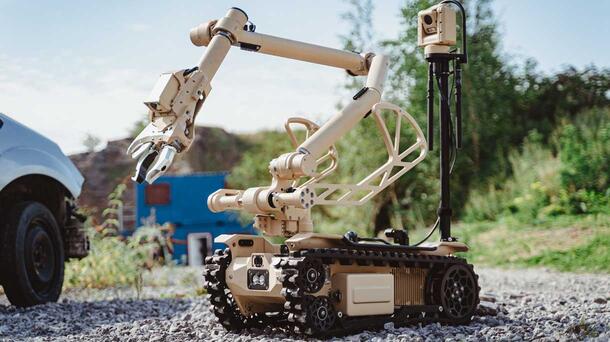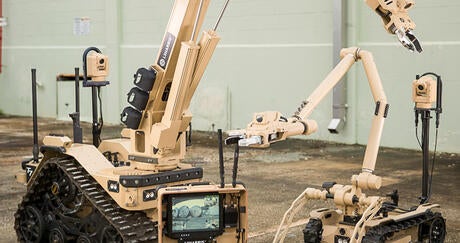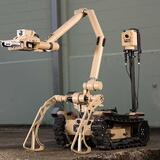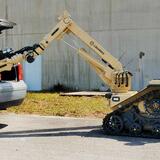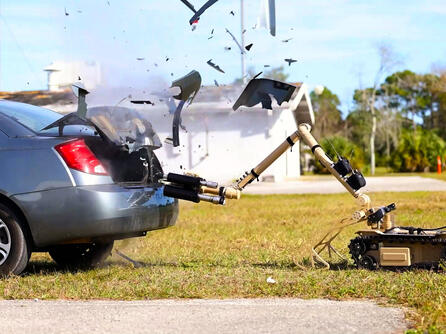What challenges do unshielded robots cause?
In today’s real world, the need for a shield is especially important in the congested and contested modern battlespace. The electromagnetic environment is a hotbed for noisy signals and emissions from multiple electronic sources. This can result in unwanted noise or electromagnetic interference (EMI) that has a highly disruptive impact on the success of a mission. EMI is particularly challenging for military personnel attempting to conduct explosive ordnance disposal (EOD) missions with the support of a robotic systems fleet and electromagnetic countermeasures (ECM).
Robots that are unshielded or insufficiently hardened against EMI can cause significant problems during EOD missions. From minor malfunctions to unintentionally setting off improvised explosive devices (IEDs), a robot fleet can quickly become a liability if not properly protected. L3Harris’ large T7 and medium-sized T4 robots go the extra mile to protect against EMI, offering aerospace-grade shielding and operational flexibility to fulfil the needs of any mission.
Unshielded robots can present EOD teams with several challenges:
1) Unpredictable malfunctions
If unshielded from EMI, robots can act unpredictably. Depending on the robot configuration, this might result in anything from unprompted and erratic movements to the robot shutting down unexpectedly mid-mission. EMI may even cause the robot to accidentally fire powerful disruptors that are used to gain access to or defeat EOD threats. This can be extremely dangerous and jeopardize the mission, putting operators at risk of injury.
2) IED initiation
The unpredictable threat of remotely triggered IEDs is a constant concern for EOD teams. While operators may employ ECM to protect themselves against such threats, the robots may pose an additional challenge. The noisy radiation each robot emits is highly likely to affect its surroundings, potentially initiating devices without meaning to. A robot not hardened against EMI could unwittingly trigger a remote-controlled IED to explode, adding further threat to life to the operators it was designed to protect.
3) Masked signals
A noisy robot’s electronic signature can cause wider issues for military teams that extend beyond EOD alone. When conducting surveillance-based or signals intelligence missions, a noisy robot can ultimately mask the threat signals being emitted by the adversary, making it much more difficult to identify the location or malicious intent of the enemy.
4) Compatibility with self
The sensors, jammers and tools deployed by EOD teams to support a mission may also impact the robot’s operation, seeing unwanted interference cause the robot to engage in unsafe actions that compromise mission success. The high-power jammers used to protect against remotely triggered IEDs can result in dangerous and unpredictable robot behavior if they are not properly shielded. Moreover, excessive emissions from an unshielded robot may interfere with the ability of sensors to operate. It is of vital importance that all concurrently-deployed capabilities function together seamlessly in order to ensure force protection is not compromised.
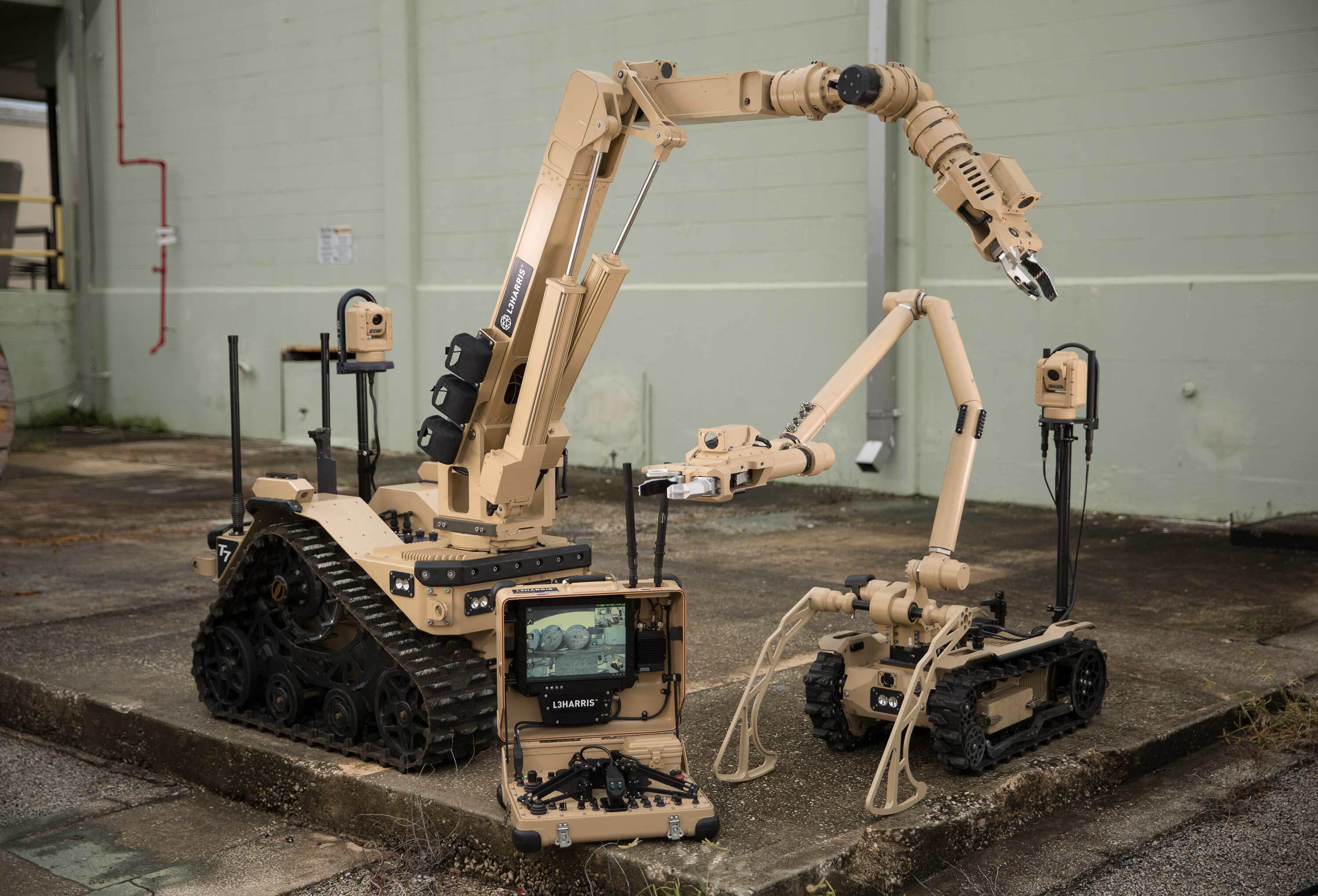
L3Harris robots go above and beyond for EMI protection
Proven through years of fielding in high-threat environments, L3Harris’ T7 and T4 robots take EMI protection to the next level. By combining protective Faraday cages aligned to industry best practice with ambitious aerospace-grade shielding, they are ready to defend against the challenges of EMI.
Initially trialled in test chambers and assessed by world-class experts, the T7’s shielding is tried and tested. L3Harris has worked closely and collaboratively with its industry partners to enhance the large robot’s components, ensuring that even its headlights and camera lenses are protected by built-in wire meshes. This degree of protection enables the T7 to carry ECM jammers without any negative impact from EMI. Built on the foundations of the T7 while incorporating lessons learned, the same rigour has been applied to the T4, with external and internal collaboration from knowledgeable engineers informing and refining the robot’s design.
With a long and established heritage in electronic warfare (EW) and ECM, L3Harris is well-positioned to apply this expertise to EMI protection for the T7 and T4 robotic systems. L3Harris’ CORVUS EW systems can even be combined with the T7 and T4 to provide a mobile ECM capability if required.
Learn more about why these cutting-edge robots are being deployed by world-leading EOD users here or visit Stand H5-310 at DSEI 2023 from 12 – 15 September in London.
